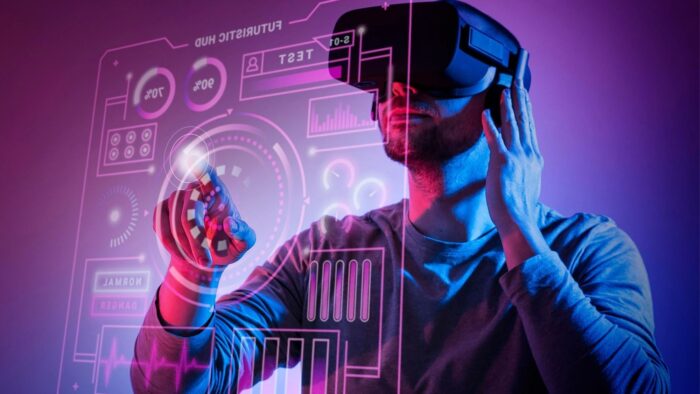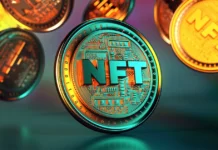
The term “Web 3.0” was first coined by Tim Berners-Lee in 2006, although the concept had been around for much longer. The term next-generation internet refers to the generation of the internet following current technology, when users not only interact with one another but also with the data and information they generate. This is in contrast to the current “web 2.0”, where users are connected to each other but not to the data they create.
The Metaverse is a term coined by Neal Stephenson in his science fiction novel Snow Crash. It refers to a virtual realm established by the interaction of multiple users. This is in contrast to the current “physical world”, where each user exists in their own physical space. The Construct of Web 3.0 is the combination of these two concepts. a virtual world that is created by the interaction of multiple users, where each user is connected to the data and information they create.
There are many potential applications of this construct. For example, it could be used to create virtual worlds for education, training, or entertainment. It could also be used as a platform for online commerce or social networking.
Devices Compatible with Web 3.0

In order to access the Construct of Web 3.0, you will need a device that is compatible with it. Currently, there are two types of devices that are being developed for this purpose; Augmented reality (AR) glasses and Virtual reality (VR) headsets.
- AR glasses are a type of wearable computer that allows you to see the real world around you, while also seeing digital information superimposed over it. The most well-known example of this technology is the Google Glass, which was released in 2013.
- VR headsets are a type of wearable computer that allows you to be immersed in a virtual world. The most well-known examples of this technology are the Oculus Rift and the HTC Vive, which were released in 2016.
Both AR glasses and VR headsets are still in the early stages of development, and it will likely be several years before they are widely available to consumers. However, there are already a number of companies working on this technology, and it is expected to grow rapidly in the coming years.
Web 3.0 vs. Web 2.0

The construct of Web 3.0 is often described as a “semantic web” or a “web of data”. This is in contrast to the current “web 2.0”, which is often described as a “social web” or a “web of people”. As mentioned, the difference between these two terms is that web 2.0 focuses on the connection between people, while Web 3.0 focuses on the connection between data. To put it another way, web 2.0 is about connecting people to each other, while Web 3.0 is about connecting people to data.
The construct of Web 3.0 has the potential to revolutionize the way we use the internet. It could create new opportunities for businesses and individuals, and it could change the way we interact with each other and with the world around us.
The Construe of Web 3.0 and Cryptocurrency

The construct of Web 3.0 has the potential to revolutionize the way we use the internet, and one of the most promising applications of this technology is in the area of cryptocurrency. Cryptocurrencies are a form of digital asset that uses cryptography to protect its transactions. The Bitcoin cryptocurrency, which was the first and most well-known of its kind, was created in 2009.
Since this time, hundreds of additional cryptocurrencies have been developed, with the aggregate value of all cryptocurrencies now surpassing $100 billion. Cryptocurrencies are frequently referred to as “digital gold” due to their similarity to precious metals. They are scarce, they are durable, and they have a decentralized nature. However, there are also some important differences between cryptocurrencies and gold.
For one, cryptocurrencies are much more easily divisible than gold. This means that they can be used to make small purchases, as well as large ones. Furthermore, cryptocurrencies are not subject to the same regulations as precious metals. This makes them attractive to investors who are looking for an asset that is not subject to government control.
Platforms that Support Web 3.0
Web 3.0 is still in its early stages of development, and there are many platforms that are being created. The following list is just a small sampling of what is available.
VR Chat
A social platform that allows users to create and share virtual worlds.
High Fidelity
A platform that allows users to create and explore virtual worlds.
Decentraland
A decentralized virtual world where users can buy, sell, or lease land.
Ethereum
A decentralized platform that runs smart contracts. programs that can be used to create and manage virtual assets.
IPFS
A decentralized file system that can be used to store and share virtual assets.
VR Casinos
A type of casino.fanduel.com online that uses virtual reality technology to give users a more immersive experience.
The Metaverse Roadmap

In order to make the Metaverse a reality, there are a number of challenges that need to be addressed. These include.
- Scalability. The Metaverse will need to be able to support billions of users.
- Security. The Metaverse will need to be secure from attack and exploitation.
- Privacy. Users will need to be able to control who has access to their data and information.
- Interoperability. The Metaverse will need to be able to interoperate with existing systems and platforms.
The above challenges are not insurmountable, and there is active research and development taking place in all of these areas. With the right platform in place, the Metaverse could become a reality within the next few years.
The Bottom Line
The Metaverse has the potential to change the way we live, work, and play. It could become a platform for social interaction, commerce, education, and entertainment. The possibilities are endless. The Metaverse is still in its early stages of development, and there is a lot of work that needs to be done in order to make it a reality.
However, the potential rewards are huge, and the Metaverse is worth pursuing. It will revolutionize the way we interact with the internet, and with each other.

















